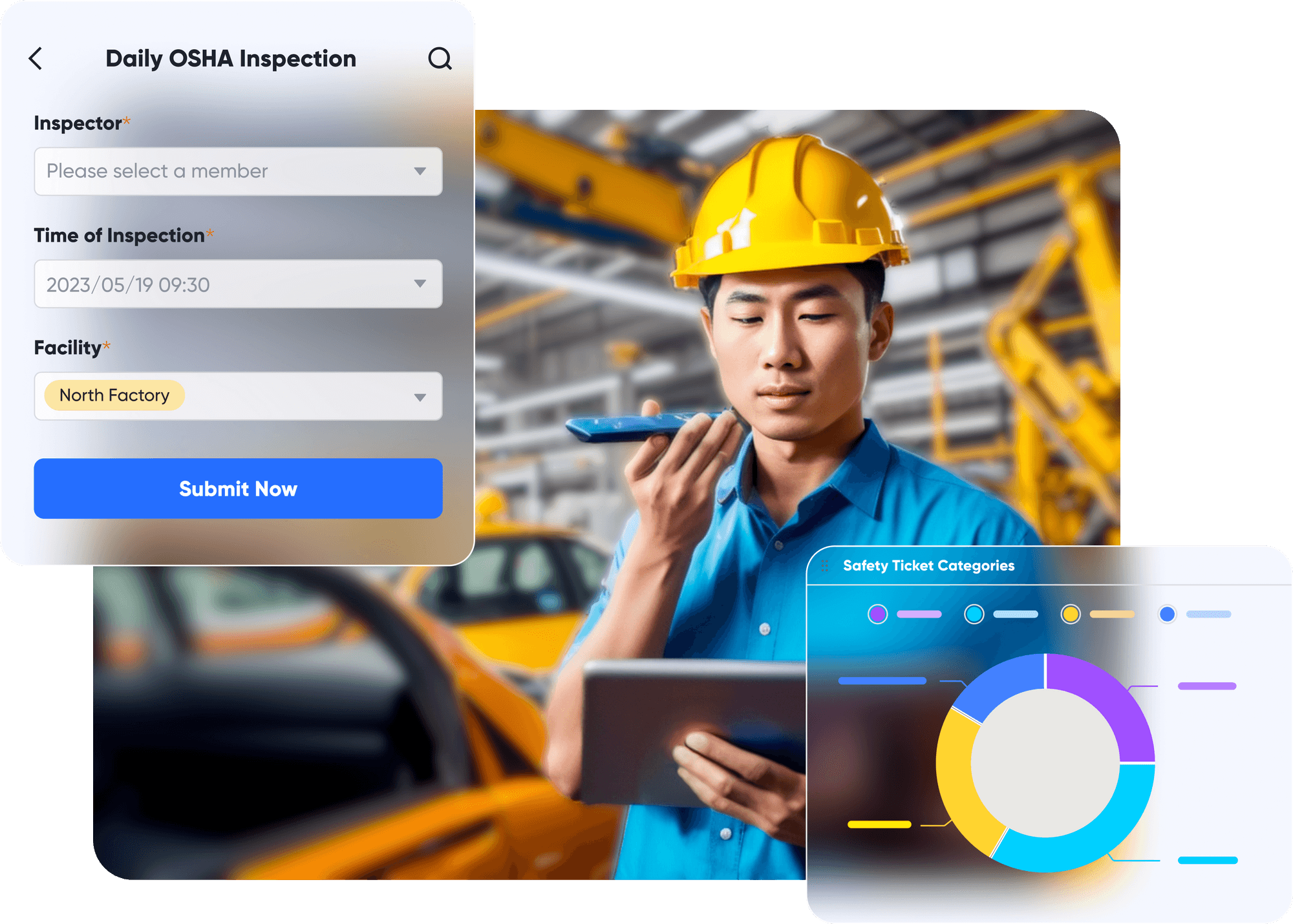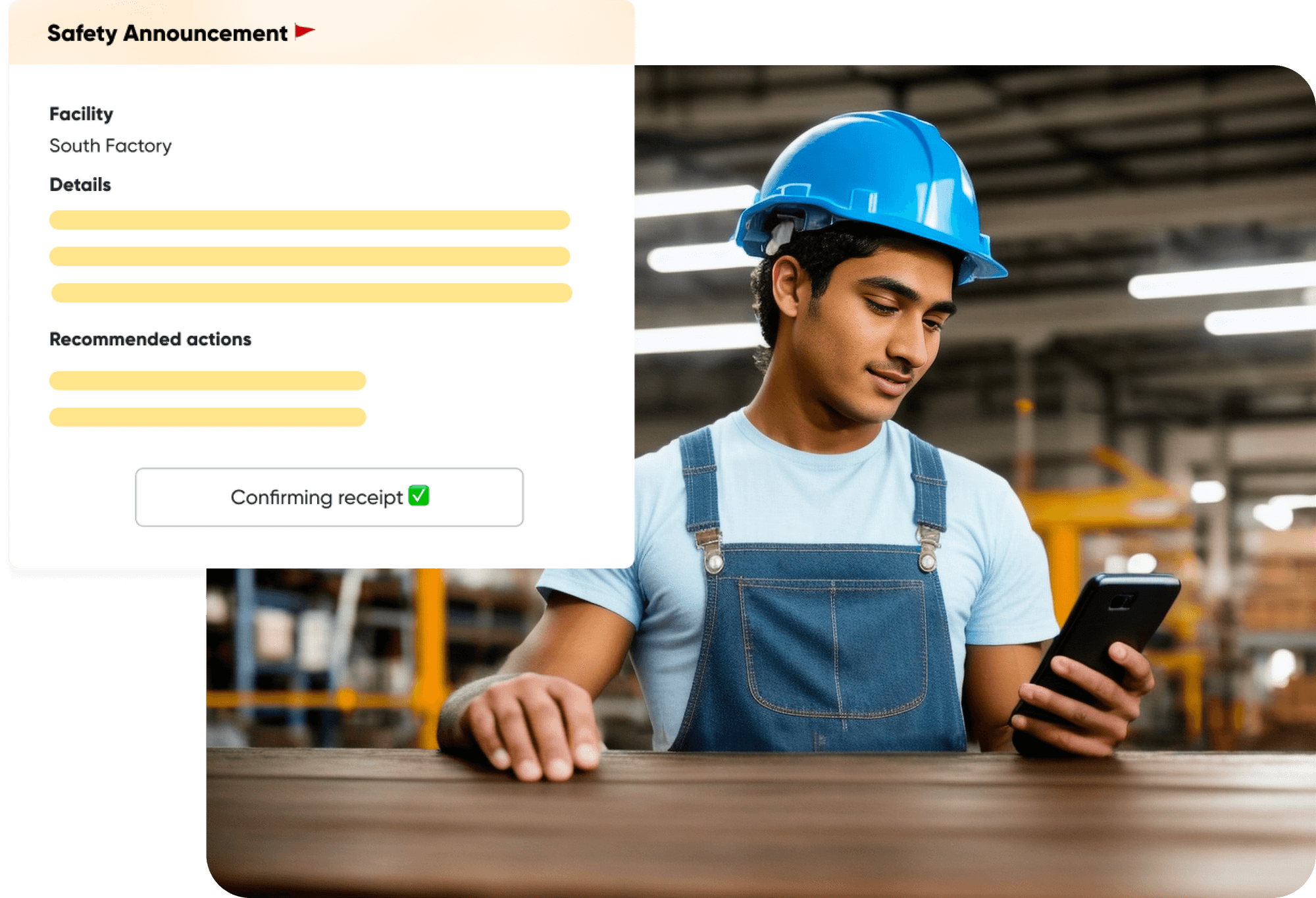If you work in an industry where some or all of the work occurs in the field - such as a factory facility or construction site - you have likely looked into your local workplace safety regulations. One such regulation is OSHA compliance.
In this post, we will provide a followable guide on what OSHA is, why it is important for your industry, and how companies can stay compliant with its regulations to protect employees while they are at work while saving costs on unnecessary penalties.
What is OSHA?
OSHA stands for Occupational Safety and Health Administration, an agency of the United States Department of Labor established in 1970 to ensure that employers provide their workers with safe and healthy working conditions. It sets and enforces safety standards to prevent workplace accidents, injuries, and illnesses.
OSHA regulations apply to a wide range of industries, including manufacturing, construction, healthcare, and many others. Compliance with OSHA regulations is verified by compliance officers through inspections, investigations, and audits. Depending on the type of violation, a penalty from OSHA can cost up to $156,259.
What is the purpose of OSHA?
OSHA compliance is not just important for manufacturing companies, but for all industries where workers face potential hazards. By complying with OSHA regulations, companies can reduce the risk of accidents, injuries, and illnesses in the workplace. This not only protects workers and the environment, but can also help companies avoid costly fines and legal action.
Workplace safety: OSHA regulations help prevent accidents and injuries at work, which reduces the risk of lost productivity, lawsuits, and workers' compensation claims.
Environmental friendliness: OSHA regulations also promote environmental protection by reducing hazardous waste, air pollution, and other environmental hazards.
Employee well-being: OSHA regulations ensure that employees are protected from unsafe working conditions, improving their morale, job satisfaction, and overall well-being. In recent years, OSHA has also expanded its focus to include mental health support for workers.
How to stay compliant with OSHA Regulations: 5 tips to follow
In field operations, businesses can stay compliant with OSHA regulations by implementing the following tactics:
1. Regular, traceable daily inspections
It will be too late to deal with safety issues when an OSHA compliance officer comes in to inspect violations. We recommend conducting daily inspections to identify potential hazards and issues proactively. It is good practice to digitize inspections instead of using pen and paper. This way, inspection reports can be centralized in one place for analysis and follow-up.
You may also consider setting up automatic reminders for your in-field teams to investigate, process, and close issues found during inspections to ensure that nothing falls through the cracks.

2. Prepare a hazard communication plan
If your business stores and uses hazardous chemicals for production purposes, OSHA requires a hazard communication program that includes labels, signs, and other forms of communication to alert workers to potential hazards.
We recommend put this program in written using an online doc that helps you articulate the steps, responsible staff, and protocols below. This also helps your employees access the plan on their phones instantly in contingent situations.

Learn the hazard communication standard, and keep an updated copy of it in your program document
Identify responsible staff on your frontline team who will be coordinating the implementation; we recommend assigning different staff to particular activities
Make sure your containers are labeled, keep an up-to-date glossary of the labels, and store your safety data sheets for each of the hazardous supplies
3. Make OSHA compliance trainings accessible
OSHA requires businesses to provide regular safety and compliance training to workers. This ensures that they are aware of OSHA regulations and know how to comply with them.
When it comes to implementation, many of the frontline workers do not have access to desks or laptops. Therefore, whether it's virtual or on-demand training, it is important to make it accessible on mobile phones. Additionally, consider sending post-training surveys to ensure your frontline teams are aware of the regulations.
4. Ensure there are enough safety supplies
The first step of workplace safety and hazard prevention is protection. One way to ensure protection is by having enough safety supplies on hand for workers to use. These might include personal protective equipment (PPE), such as gloves, goggles, and hard hats, as well as first aid kits and fire extinguishers.
We recommend using an inventory tracking system to keep track of your safety supplies. This system should allow you to monitor safety supply usage and identify potential shortages without having to physically count the supplies in storage.
5. Ensure every employee gets the latest safety update
It is of utmost importance that every employee is well-informed of the latest updates on workplace safety and OSHA requirements. This is especially critical for those on the frontline and in the field.
To efficiently broadcast safety updates, we recommend ensuring that all employees, whether at a desk or in the field, are communicating on the same platform for work.
Additionally, using a smart bot to send safety updates in bulk and requiring acknowledgement from every employee by clicking on a button will help confirm that all frontline teams are aware of the changes and remain cautious.

What are some common OSHA violations?
OSHA violations can result in hefty fines, legal action, and reputational damage for companies. Some common OSHA violations include:
Fall protection: Failure to provide adequate fall protection for workers on elevated surfaces or work areas.
Hazard communication: Failure to provide adequate hazard communication, such as labels, signs, and other forms of communication, to alert workers to potential hazards.
Respiratory protection: Failure to provide adequate respiratory protection for workers exposed to harmful airborne particles or chemicals.
Machine guarding: Failure to provide adequate machine guarding to protect workers from moving machine parts that could cause injury or amputation.
Electrical wiring methods: Failure to provide adequate electrical wiring methods that comply with OSHA standards and prevent electrical hazards.
The importance of having the right tools
To deploy the tactics mentioned above effectively, businesses need the right tools to stay organized and efficient. Consider using a tool like Lark, a collaboration platform that helps teams in the field or at a desk stay updated on important updates, conduct routine tasks, receive regular training, and report potential issues with ease.
By understanding what OSHA is, why it is important, and how to stay compliant with its regulations, manufacturing companies can reduce the risk of accidents, injuries, and illnesses in the workplace. With the right tools, your frontline teams can streamline their OSHA compliance efforts and ensure that the workers are safe and healthy.
Ready to improve your facility compliance? Let our team at Lark know today to get a free consultation on how to implement the tips above ⛑
Table of Contents








